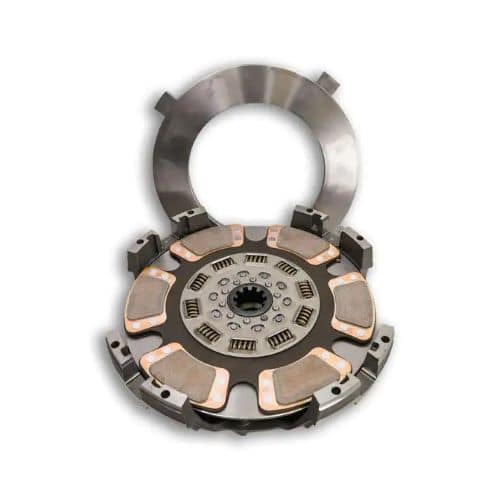Spec’ing the Correct Clutch: Avoid Pesky Slippage
Written November, 2022
Did You Know? The first clutch was invented in 1855 by the renowned Karl Benz (yes, Daimler Mercedes Benz!). This served as the world's first internal combustion-driven automobile.
The first clutch was unpredicatable, needing frequent replacement, unlike modern clutches. The 1855 clutch proved, even 137 years later, slippage of gears would be the malfunction to avoid.
The clutch operates as the connection that transports torque between the engine and the transmission. It simultaneously dampens engine vibrations to the downstream drivetrain components. High-tensile strength is paramount with exposure to a high amount of heat that must be dissipated
The clutch helps the rig change gears smoothly and transfer power efficiently, giving allowance for forward or backward movement. This is no small feat, considering your clutch protects your drivetrain from the engine and road demands.
Avoiding Clutch Slippage
Before exploring the factors of selecting a truck clutch, it is crucial to understand what clutch slippage is. Clutch slippage occurs when the power transmitted between the engine and transmission is curbed, resulting in a loss of torque.
This reaction not only affects the vehicle's overall performance, but also leads to other problems. These problems include excessive heat generation, accelerated wear and tear, and decreased fuel economy. By choosing the correct heavy-duty clutch, you can prevent pesky clutch slippage and ensure optimal power transfer.
Choosing a Clutch for your Application

To choose a heavy duty clutch, consider several factors. These include torque capacity, flywheel bore size, shaft diameter, number of splines, and whether you need a manual or automatic clutch. FleetPride has a variety of clutches available from well-known brands like OTR, as well as Eaton. Let's take a deeper dive into the factors you need to consider when choosing between the different options.
The most important rule when spec'ing your clutch is bigger is not always better. Do not buy a high torque capacity clutch than what your engine requires.
Your clutch acts as a circuit breaker, protecting your driveline from engine vibration. Over-spec'ing your clutch could result in eventual driveline damage due to the engine vibrations being passed downstream with increased maintenance costs.
To avoid such costly errors, match your engine torque rating to the clutch torque rating. The torque rating determines the maximum torque produced load the clutch can handle without slipping.
Good News! Keep your hard-earned cash in your wallet, where it belongs. You can reduces costs by not purchasing a clutch that's more powerful than you need.
Spline Count
Another important step is to input the transmission input shaft diameter and number of splines when spec'ing your heavy duty clutch. The spline count for your transmission input shaft and friction disc must match, ensuring proper fit. To find your transmission's spline count, simply look up the transmission model number.
Other Factors to Consider
One common challenge is identifying the correct clutch for a specific truck model or engine type. It's easier than ever to find the right clutch for your truck with the support of FleetPride.com. Here you have access to vast inventory as well as the industry's Heavy Duty Experts™ to guide you.
Lastly, do you need a manual or self-adjusting clutch? Self-adjusting is recommended if your clutch linkage is hydraulic. Manual-adjust is recommended if your clutch linkage is mechanical.
OTR: Durability You Can Rely On
OTR's heavy duty clutches have Expertise Built In™. The new, high-quality OTR clutches proudly offers 3-year warranty (conditions apply). No core is needed.
Made in the U.S.A., OTR clutches uses the latest ceramic material, delivering 10-15% more holding power than carbotic. Rely on performance. Rely on OTR.
* The foregoing is provided for informational purposes only. Please consult your local FleetPride Heavy Duty Experts to verify the suitability of a part for the intended application.

